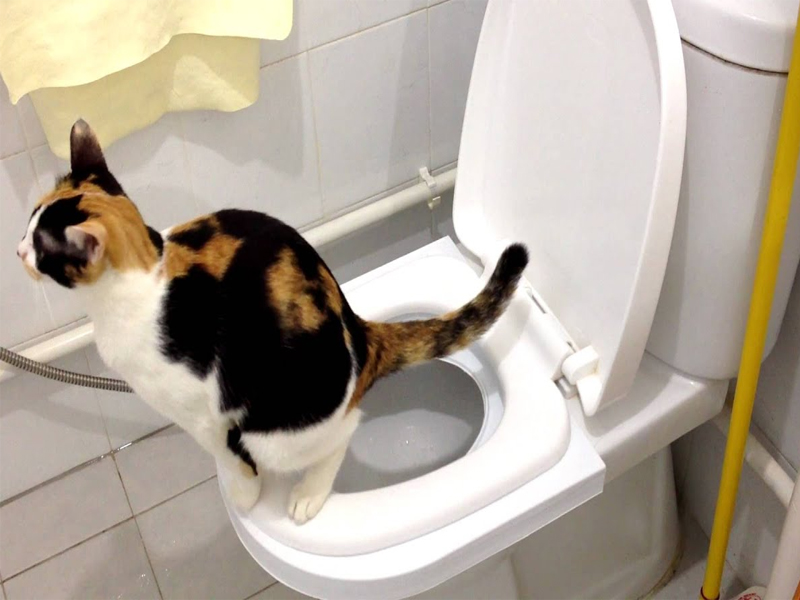You’re probably wondering why your cat is always scratching itself… its definitely frustrating for both pet owners, veterinarians, and of course your cat! The signs most often noticed by owners are itching, excessive grooming, hair loss, and scabs. There are many causes for skin problems like these, and it is often difficult to tell them apart.
The most commonly diagnosed include:
- Flea-bite hypersensitivity
- Other skin parasites (e.g., mites)
- Food allergies
- Environmental allergies
The easiest problem to diagnose is flea-bite hypersensitivity, even though finding the fleas can be tricky. If a visual inspection or a flea combing does not reveal the problem, the telltale sign of flea “dirt” (digested blood that the flea deposits in the fur) is usually seen along the lower back, tail base, or around the neck. If no fleas or flea dirt are found, but the cat is scratching in these areas, a treatment trial with a veterinarian-recommended flea medication is warranted. You must treat all pets in the household for several months to completely eradicate the fleas.
Cats that go outside or are in contact with outdoor pets are more likely to be infested with these pests. Skin mites may be found with multiple skin scrapings or hair combings, but false negative results do occur. Treatment options in confirmed or suspected cases include a topical, broad-spectrum parasiticide (e.g., Revolution or Advantage Multi), or, potentially, lime sulfur dips.
Food allergies (otherwise known as cutaneous adverse food reactions) are typically manifested by scabs and hair loss around the neck and face, but can affect other parts of the body, too. Some cats will also experience diarrhea or vomiting along with the pruritis and skin lesions. Contrary to the popular belief that a food allergy only occurs after a recent diet change, your cat may have been eating the same food for a long time, but only recently developed a hypersensitivity to it. The most common allergy-causing ingredients in cat foods are beef, fish, and dairy. Wheat, corn, chicken, and eggs are much lower on the list.
There are no good laboratory tests to confirm the food allergy. An 8-10 week diet trial with a novel, hypoallergenic diet (for example, duck and pea or venison and pea) is often necessary to confirm. Improvement in pruritis and skin lesions is sometimes evident in 3-4 weeks, but a full 8-10 week trial is often required. For this reason, veterinarians usually rule-out other diseases before recommending a food trial. Most veterinarians also recommend a prescription hypoallergenic diet instead of trying over-the-counter (OTC) foods. Prescription diets are manufactured on production lines that are dedicated to this diet, preventing trace food particles (potential allergens) from entering into the food, whereas OTC brands often are not.
Inhalant or environmental allergies (atopy) often begin earlier in a cat’s life and may start as a seasonal problem in the spring and/or fall. Over time, the signs usually get worse and may occur throughout the entire year. Alternatively, indoor allergens (e.g., dust mites) can cause year-round problems from the start.
The target organ for atopy (unlike the respiratory signs in people) is the skin. Cats may have many different areas of the body affected, making this problem difficult to differentiate from other skin diseases. Often, after eliminating more easily diagnosed problems, veterinarians will try a steroid trial. This involves either an oral medication given daily or an injection given every 6-8 weeks, as needed. The daily medication allows for more precise dosing and less risks of side effects but can be difficult with some cats (to say the least!). An alternative medication called cyclosporine is more in favor now due to fewer side effects; however, it is a more expensive option.
Atopy is a chronic problem, often requiring repeat treatments. Because the long-term use of steroids carries risks (e.g., steroid induced diabetes mellitus), your veterinarian will work with you to decide the best option for your pet.
Diagnosing skin problems in cats is not always easy. It requires patience and may need several visits to the veterinarian. It may take weeks to months to clear up the lesions, as well as long-term management to keep the problem under control.










